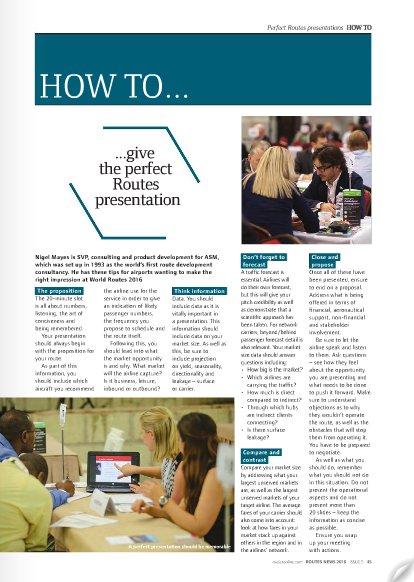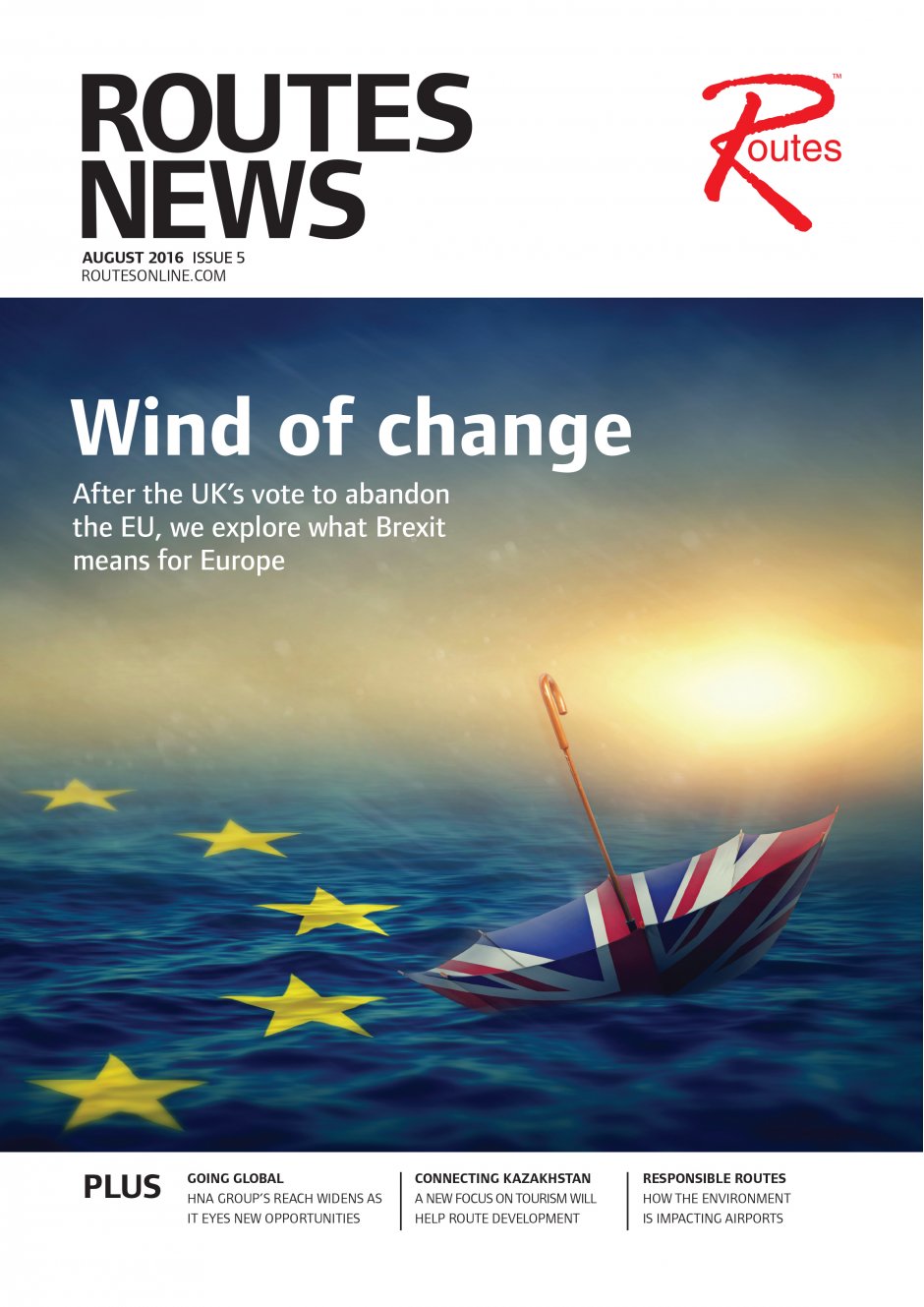In our regular Routes News series we aim to help the air service development community to better fulfill their jobs with guidance on industry trends and key topics. In this issue we speak to Nigel Mayes on 'How to... give the perfect Routes presentation'. He is SVP, consulting and product development for ASM, which was set up in 1993 as the world’s first route development consultancy. He has these tips for airports wanting to make the right impression at World Routes 2016.
The proposition
The 20-minute slot is all about numbers, listening, the art of conciseness and being remembered. Your presentation should always begin with the proposition for your route. As part of this information, you should include which aircraft you recommend the airline use for the service in order to give an indication of likely passenger numbers, the frequency you propose to schedule and the route itself. Following this, you should lead into what the market opportunity is and why. What market will the airline capture? Is it business, leisure, inbound or outbound?
Think information
Data. You should include data as it is vitally important in a presentation. This information should include data on your market size. As well as this, be sure to include projection on yield, seasonality, directionality and leakage – surface or carrier.
Don’t forget to forecast
A traffic forecast is essential. Airlines will do their own forecast, but this will give your pitch credibility as well as demonstrate that a scientific approach has been taken. For network carriers, beyond/behind passenger forecast detail is also relevant. Your market size data should answer questions including:
• How big is the market?
• Which airlines are carrying the traffic?
• How much is direct compared to indirect?
• Through which hubs are indirect clients connecting?
• Is there surface leakage?
Compare and contrast
Compare your market size by addressing what your largest unserved markets are, as well as the largest unserved markets of your target airline. The average fares of your carrier should also come into account: look at how fares in your market stack up against others in the region and in the airlines’ network.
Close and propose
Once all of these have been presented, ensure to end on a proposal. Address what is being offered in terms of financial, aeronautical support, non-financial and stakeholder involvement. Be sure to let the airline speak and listen to them. Ask questions – see how they feel about the opportunity you are presenting and what needs to be done to push it forward. Make sure to understand objections as to why they wouldn’t operate the route, as well as the obstacles that will stop them from operating it. You have to be prepared to negotiate. As well as what you should do, remember what you should not do in this situation. Do not present the operational aspects and do not present more than 20 slides – keep the information as concise as possible. Ensure you wrap up your meeting with actions.
 |
This article is modified from an original feature that appeared in... ROUTES NEWS - ISSUE 5, 2016 PLEASE CLICK HERE to view the magazine. |
 |





